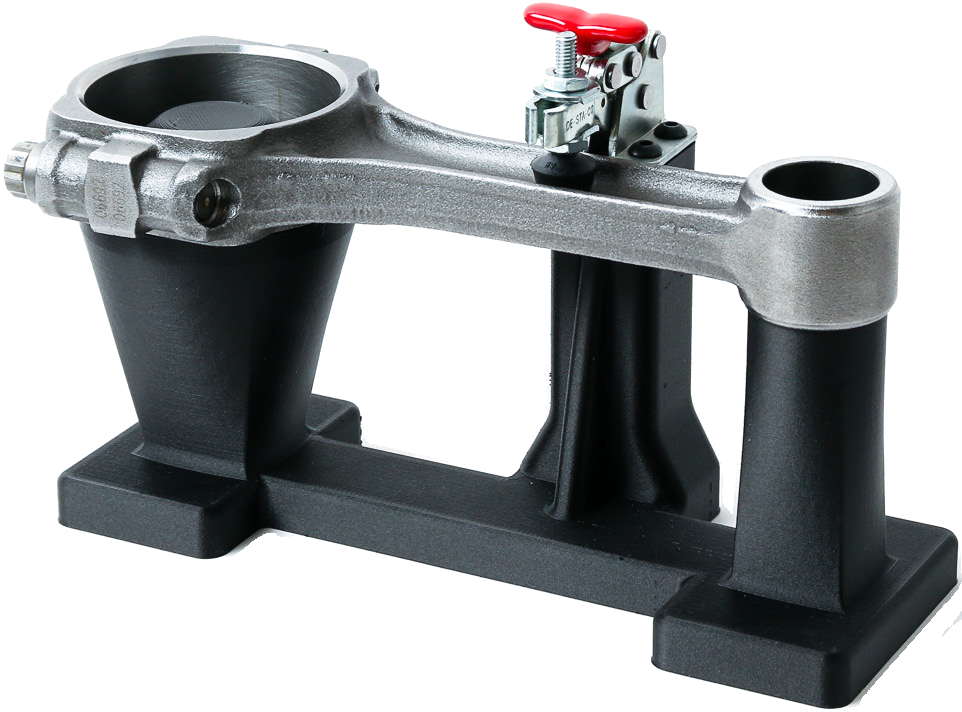Jigs, Fixtures & Tooling
Jigs, tools and fixtures are commonly used in manufacturing environments to aid processes such as machining and welding. They locate, hold and support workpieces during automation, machining and assembly processes. Reliable and repeatable positioning and assembly of parts relies on accurate jigs, tools and fixtures. Traditionally, these jigs and fixtures would be machined using a CNC router or machining centre. These parts require a high level of accuracy and customisation resulting in long lead times for production, taking up valuable time on CNC machines.
Advantages of using Bespoke Jigs, Tools and Fixtures
- Reduced waste
- Improved repeatability of parts
- Increased productivity
- Improved part accuracy
- Better worker safety and comfort
Development in 3D printers and specifically in printing materials has enabled additive manufacturing to become a viable alternative to machining to produce jigs, tools and fixtures. There are a number of benefits of using 3D printing over traditional methods:
Cost Savings
There is a reduction in costs associated with 3D printing when compared to machining, parts can be printed directly from a 3D model rather than requiring a skilled operator to program a CNC machine. 3D printing materials are also cheaper than those used traditionally when machining jigs, tools and fixtures.
Speed and Turn-around Times
The lead times associated with producing complex geometries using machining processes are significantly longer than those for 3D printing. Machining requires extensive planning by highly skilled CAM designers whereas 3D printers utilise intuitive software to prepare models directly from 3D CAD.
Reduced Weigh
In production environments, jigs and fixtures are often manipulated by workers – by minimising part weights, strain is reduced, improving safety. Printed parts can make use of internal infill structures to reduce weight while maintaining the required mechanical strength.
Material Variety
There is a vast range of materials available with 3D printing with properties such as heat resistance, ESD suitable, flame retardant and UV stable. As well as this, parts can have varying surface finishes, integrating rubberised sections to grip workpieces effectively without causing damage.
Design Freedom
3D printing gives designers increased freedom to optimise designs by enabling multiple iterations quickly and cost effectively, as well as being able to try geometries previously not possible.

